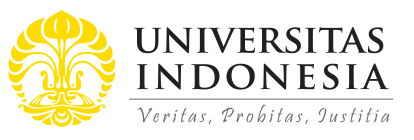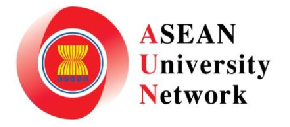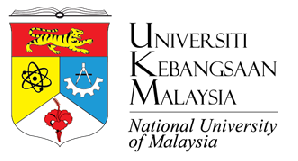
Abstract
Biliary atresia (BA) is the most common cause of death due to liver disease in children and is the most common indication for pediatric liver transplantation. The success rate of the management of BA is very dependent on the age of the patient at the time of surgery. However, patients with BA were often diagnosed late because of the lack of parents’ and primary healthcare providers’ knowledge regarding BA. This study aims to evaluate the effectiveness of health education in improving the knowledge of healthcare providers and laypersons. A total of 371 respondents participated in this pre-post study with no control group, consisting of 234 laypersons (community health workers, new mothers, and expectant mothers) and 137 healthcare providers (medical doctors, midwives, and nurses). There were significant increases in the median values between pretest and posttest knowledge scores in both the healthcare provider and layperson groups (p < .05). Health education was effective in increasing public knowledge about BA.
References
Anderson, C. D., Turmelle, Y. P., Lowell, J. A., Nadler, M., Millis, M., Anand, R., … Shepherd, R. W. (2008). The effect of recipient-specific surgical issues on outcome of liver transplantation in biliary atresia. American Journal of Transplantation, 8(6), 1197–1204.
https://doi.org/10.1111/j.1600-6143.2008.02223.x
Averbukh, L. D., & Wu, G. Y. (2018). Evidence for viral induction of biliary atresia: a review. Journal of Clinical and Translational Hepatology, 6(4), 410–419.
https://doi.org/10.14218/JCTH.2018.00046
Bassett, M. D., & Murray, K. F. (2008, July). Biliary atresia: recent progress. Journal of Clinical Gastroenterology, 42(6), 720–729.
https://doi.org/10.1097/MCG.0b013e3181646730
Campion, A., Guimber, D., Michaud, L., Bonnevalle, M., Turck, D., & Gottrand, F. (2001). Analyse du retard au diagnostic de l’atrésie des voies biliaires. Archives de Pédiatrie, 8(5), 493–498.
https://doi.org/10.1016/S0929-693X(00)00251-7
Davis, B., & Summers, M. (2015). Applying Dale’s Cone of experience to increase learning and retention: A study of student learning in a foundational leadership course. QScience Proceedings, 2015(4), 6.
https://doi.org/10.5339/qproc.2015.elc2014.6
Goodhue, C., Fenlon, M., & Wang, K. S. (2017). Newborn screening for biliary atresia in the United States. Pediatric Surgery International, 33(12), 1315–1318.
https://doi.org/10.1007/s00383-017-4159-3
Gu, Y. H., Yokoyama, K., Mizuta, K., Tsuchioka, T., Kudo, T., Sasaki, H., ... Matsui, A. (2015). Stool color card screening for early detection of biliary atresia and long-term native liver survival: A 19-year cohort study in Japan. The Journal of Pediatrics, 166(4), 897–902.e1.
https://doi.org/10.1016/j.jpeds.2014.12.063
Hartley, J. L., Davenport, M., & Kelly, D. A. (2009). Biliary atresia. The Lancet, 374(9702), 1704–1713.
https://doi.org/10.1016/S0140-6736(09)60946-6
Hsiao, C. H., Chang, M. H., Chen, H. L., Lee, H. C., Wu, T. C., Lin, C. C., … Lai, M. W. (2008). Universal screening for biliary atresia using an infant stool color card in Taiwan. Hepatology, 47(4), 1233–1240.
https://doi.org/10.1002/hep.22182
Japanese Organization for International Cooperation in Family Planning. (2019). Maternal and Child Health Handbook of Japan. Tokyo Municipal Government: Bureau of Public Health.
Kelly, D. A. (Ed.). (2017). Diseases of the Liver and Biliary System in Children. Chichester, UK: John Wiley & Sons, Ltd.
https://doi.org/10.1002/9781119046936
Kong, Y.-Y., Zhao, J.-Q., Wang, J., Qiu, L., Yang, H.-H., Diao, M., … Matsui, A. (2016). Modified stool color card with digital images was efficient and feasible for early detection of biliary atresia—a pilot study in Beijing, China. World Journal of Pediatrics, 12(4), 415–420.
https://doi.org/10.1007/s12519-016-0061-7
Lee, M., Chen, S. C.-C., Yang, H. Y., Huang, J. H., Yeung, C. Y., & Lee, H. C. (2016). Infant stool color card screening helps reduce the hospitalization rate and mortality of biliary atresia. Medicine, 95(12), e3166.
https://doi.org/10.1097/MD.0000000000003166
Lee, S. J., & Reeves, T. C. (2018). Edgar Gale and the cone of experience. In R. E. West (Ed.), Foundations of Learning and Instructional Design Technology.
https://lidtfoundations.pressbooks.com/
Lien, T. H., Chang, M. H., Wu, J. F., Chen, H. L., Lee, H. C., Chen, A. C., … Ni, Y. H. (2011). Effects of the infant stool color card screening program on 5-year outcome of biliary Atresia in Taiwan. Hepatology, 53(1), 202–208.
https://doi.org/10.1002/hep.24023
Matsui, A. (2017). Screening for biliary atresia. Pediatric Surgery International, 33(12), 1305–1313.
https://doi.org/10.1007/s00383-017-4175-3
Mogul, D., Zhou, M., Intihar, P., Schwarz, K., & Frick, K. (2015). Cost-effective analysis of screening for biliary atresia with the stool color card. Journal of Pediatric Gastroenterology and Nutrition, 60(1), 91–98.
https://doi.org/10.1097/MPG.0000000000000569
Morinville, V., Ahmed, N., Ibberson, C., Kovacs, L., Kaczorowski, J., Bryan, S., … Schreiber, R. (2016). Home-based screening for biliary atresia using infant stool color cards in Canada: Quebec feasibility study. Journal of Pediatric Gastroenterology and Nutrition, 62(4), 536–541.
https://doi.org/10.1097/MPG.0000000000001042
Narasimhan, K. L., Chowdhry, S. K., Vaiphei, K., Samujh, R., Mahajan, J. K., Thapa, B. R., & Rao, K. L. (2001). Outcome of biliary atresia from Chandigarh: results of a prospective analysis. Indian Pediatrics, 38(10), 1144–1148.
http://www.ncbi.nlm.nih.gov/pubmed/11677303
Nio, M., Sasaki, H., Wada, M., Kazama, T., Nishi, K., & Tanaka, H. (2010). Impact of age at Kasai operation on short- and long–term outcomes of type III biliary atresia at a single institution. Journal of Pediatric Surgery, 45(12), 2361–2363.
https://doi.org/10.1016/j.jpedsurg.2010.08.032
Nio, M., Wada, M., Sasaki, H., & Tanaka, H. (2015). Effects of age at Kasai portoenterostomy on the surgical outcome: a review of the literature. Surgery Today, 45(7), 813–818.
https://doi.org/10.1007/s00595-014-1024-z
Oswari, H. (2017). Kuning pada Bayi Baru Lahir. Jakarta: Badan Penerbit Ikatan Dokter Anak Indonesia.
Przybylska, D., Borzęcki, A., Drop, B., Przybylski, P., & Drop, K. (2014). Health education as an important tool in the healthcare system. Polish Journal of Public Health, 124(3), 145–147.
https://doi.org/10.2478/pjph-2014-0032
Ramachandran, P., Safwan, M., Reddy, M. S., & Rela, M. (2015). Recent trends in the diagnosis and management of biliary atresia in developing countries. Indian Pediatrics, 52(10), 871–879.
https://doi.org/10.1007/s13312-015-0735-6
Sanchez-Valle, A. (2017). Biliary atresia: epidemiology, genetics, clinical update, and public health perspective. Advances in Pediatrics, 64(1), 285–305.
https://doi.org/10.1016/j.yapd.2017.03.012
Tseng, J. J., Lai, M. S., Lin, M. C., & Fu, Y. C. (2011). Stool color card screening for biliary atresia. Pediatrics, 128(5), e1209–e1215.
https://doi.org/10.1542/peds.2010-3495
United Nations. (2019). World population prospects 2019.
https://population.un.org/wpp/Download/Standard/Fertility/
Vizeshfar, F., Zare, M., & Keshtkaran, Z. (2019). Role-play versus lecture methods in community health volunteers. Nurse Education Today, 79, 175–179.
https://doi.org/10.1016/j.nedt.2019.05.028
Wang, K. S., Section on Surgery, Committee on Fetus and Newborn, & Childhood Liver Disease Research Network (2015). Newborn screening for biliary atresia. Pediatrics, 136(6), e1663–e1669.
https://doi.org/10.1542/peds.2015-3570
Wildhaber, B. E. (2012). Biliary atresia: 50 years after the first Kasai. ISRN Surgery, 2012, 132089.
https://doi.org/10.5402/2012/132089
Witt, M., Lindeboom, J., Wijnja, C., Kesler, A., Keyzer-Dekker, C., Verkade, H., & Hulscher, J. (2015). Early detection of neonatal cholestasis: inadequate assessment of stool color by parents and primary healthcare doctors. European Journal of Pediatric Surgery, 26(01), 067–073.
Recommended Citation
Lianti, Hanna; Kurnia, Novi; Rinaldhy, Kshetra; Aji, Amanda Safira; Ismet, M Febriadi; and Amaliah, Rizky
(2020).
Analysis of knowledge regarding Biliary Atresia among healthcare providers and laypersons in East Jakarta after educational intervention.
ASEAN Journal of Community Engagement, 4(1).
Available at: https://doi.org/10.7454/ajce.v4i1.1053







